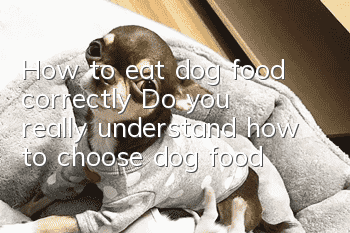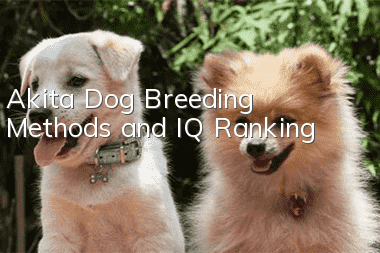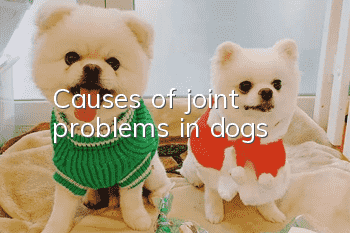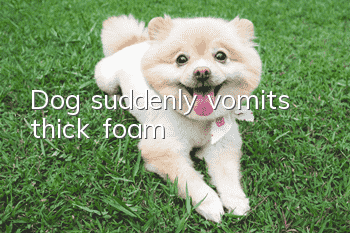How to eat dog food correctly? Do you really understand how to choose dog food?

Dog food can be divided into three categories in terms of form: dry food, wet food and semi-dry food between dry and wet food.
As can be seen from the naming, this classification is based on moisture content. But I haven’t found an accurate definition of what moisture content meets the standard.
Dry food: It is our most common dog food, extruded food similar to biscuits. The advantage is that it is good for dental health. At the same time, it is easy to transport and store, not easy to deteriorate, and has low production cost.
Wet food: Looks like canned food, but is different from canned food. Canned food cannot replace staple food, but wet food can. The nutritional ratio of the two is different. The biggest advantage of wet food is that it is easier to digest and more palatable. However, eating wet food for a long time is not good for dental health and can easily produce tartar. Therefore, it is recommended to eat wet food with snacks such as teething sticks.
Semi-dry food: It is a kind of dog food between dry food and wet food. It looks similar to dry food, has a much higher moisture content than dry food, and is much harder than wet food. In terms of palatability and dental health, they are between dry food and wet food. Specifically designed to deal with difficult choices!
Functional classification of dog food
Another common classification of food is functional classification, which is still divided into three categories: staple food, supplementary food, and prescription food.
Staple food: It is the food that dogs eat every day. Dry food, wet food, or semi-dry food can all be used. The main thing is that the nutritional ratio must be balanced.
Supplementary food: It is a kind of supplementary food, either used to supplement nutrition or to improve taste. But it cannot be based on supplementary food. Because most of the formulas of complementary foods are high in protein and energy: or there are many food attractants for seasoning...the canned foods we usually see are typical complementary foods.
Prescription food is food produced for certain special physiques or diseases. The most common is dry food, but there is also wet food, which is called prescription canned food. These prescription foods are not recommended for long-term use by dogs who do not need them. Because prescription food is not formulated for healthy dogs, it is no more beneficial to health than regular dog food.
The new concept of dog food
Natural food: Proposed by AAFCO (American Feed Control Association) and FEDIAF (European Pet Food Industry Federation), there is no clear standard in my country. Therefore, domestically produced grains are not truly natural grains.
AAFCO mainly emphasizes that the raw materials are natural materials and does not add artificial preservatives, food attractants, food colorings and other additives. The raw materials have no pesticide residues and no heavy metal pollution. FEDIAF further stipulates that steps such as freezing, concentration, extraction, drying, sterilization, and smoking in the processing process can only be usedphysical way. Microbial treatments, enzymatic, hydrolysis and fermentation also meet the criteria. At the same time, FEDIAF does not accept genetically modified raw materials.
Natural food is not a simple regulation that requires the use of fresh meat, but a series of detailed and complex industry standards. The cost of natural food is much higher than that of ordinary dog food, and its palatability is generally not good. Moreover, there are no relevant standards or regulations for natural grains in our country, so the natural grain market is very confusing.
Natural food is not an upgraded version of dog food 2.0, it is just a type of dog food.
Freeze-dried food: The accurate term should be freeze-dried formula food. That is, adding freeze-dried meat pellets or other freeze-dried raw materials to ordinary dog food. Of course, there are also dog foods whose ingredients are all freeze-dried. In terms of cost alone, they are already out of reach of the public.
The freeze-drying process can well preserve the nutrients of natural ingredients and is an emerging food processing technology. Some ingredients are not freeze-dried directly, but are processed and then freeze-dried. For example, most offal is cooked first and then freeze-dried.
Freeze-dried food is healthier for pets, but the production cost is very high. Therefore, freeze-dried food is very expensive.
Grain-free: Also often called hypoallergenic. Because grains (mainly corn) can cause allergies in dogs, some dogs must eat grain-free grains.
The proportion of dogs allergic to grains is not low. According to my personal experience, it is about 10%. This system is not hereditary, but occurs occasionally in a single dog.
The nutritional content of grain-free grains is no different from that of ordinary grains, except that grains that may cause allergies are replaced with ingredients such as sweet potatoes or potatoes. Therefore, the proportion of crude fiber (also called dietary fiber, which cannot be digested) will be reduced, making it easier to digest.
- How much carrots should a dog eat at one time?
- What to do if your dog eats ginger?
- Why do dogs squeeze their anal glands?
- Can Teddy dogs eat durian?
- What does it mean when a teddy dog cries?
- Is it impure if Bichon Frize fetal hair is yellow?
- Why do dogs have brown discharge from their eyes? Please pay attention to the problem of dog eye droppings
- Can dogs eat glutinous rice balls? Do not feed dogs anything made from glutinous rice.
- Vomiting and diarrhea in dogs in autumn are mostly caused by their owners
- What should dogs eat when they lose hair in autumn? You need to know these natural hair care products!



